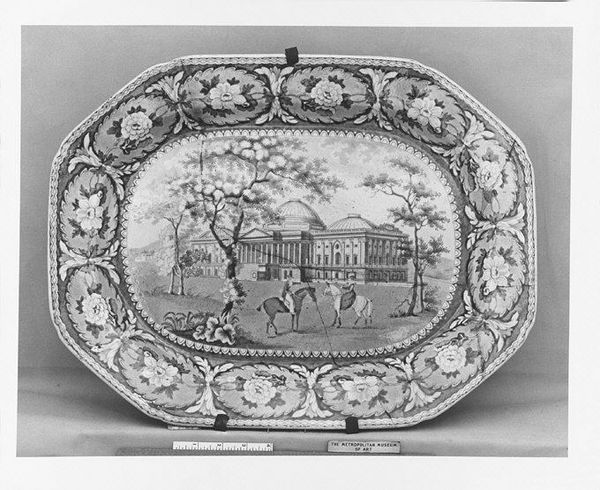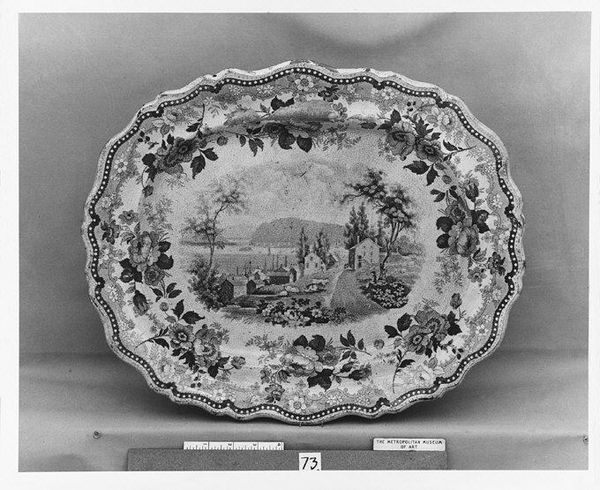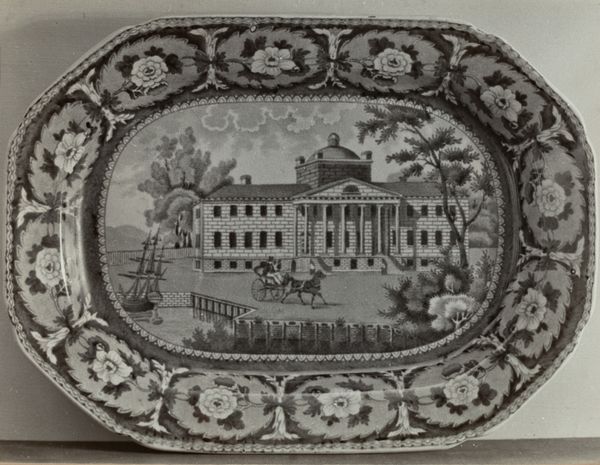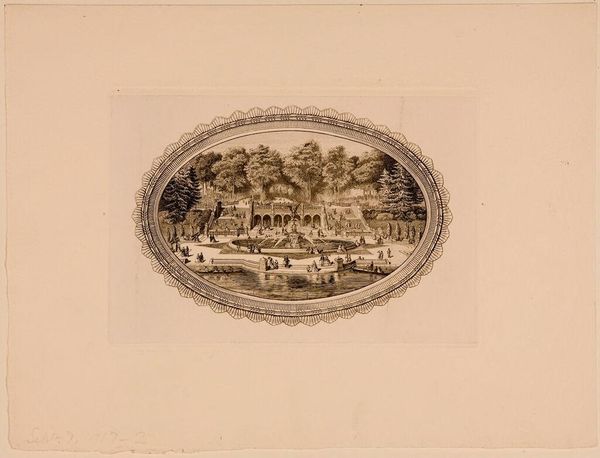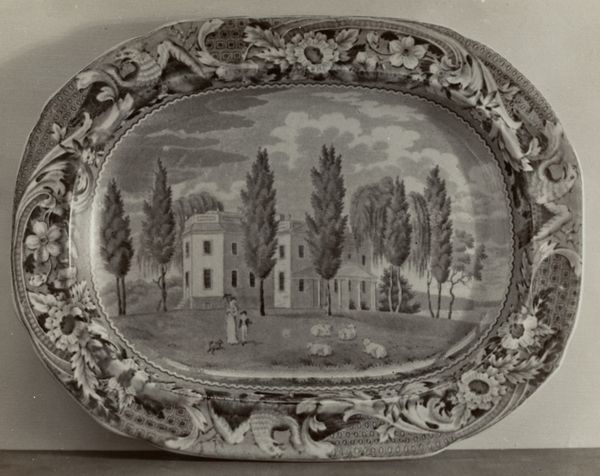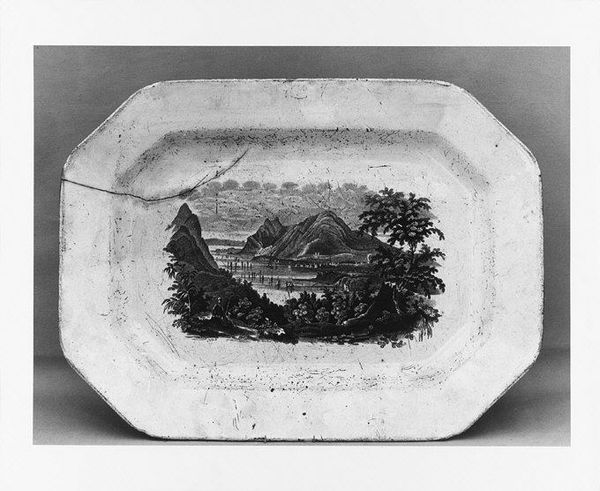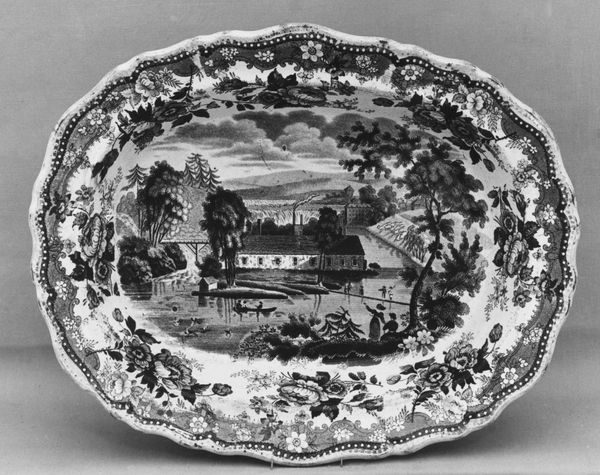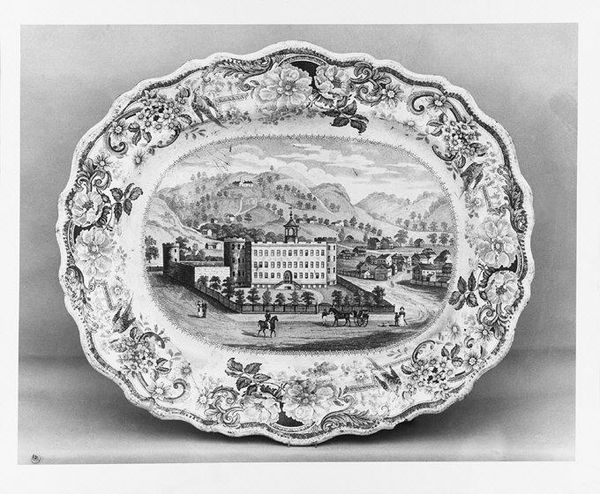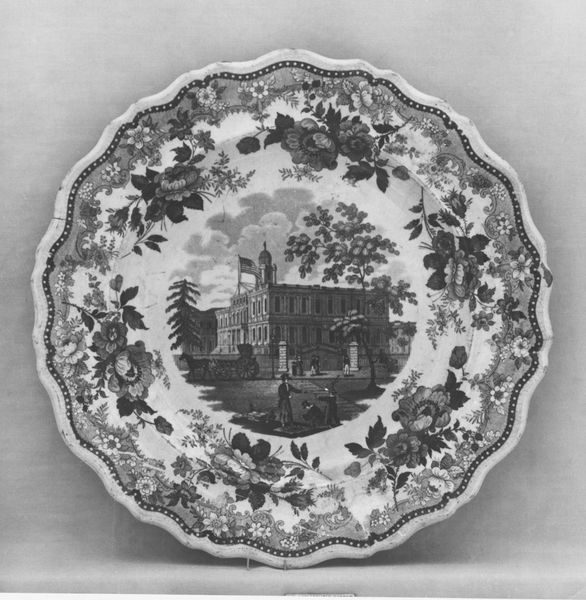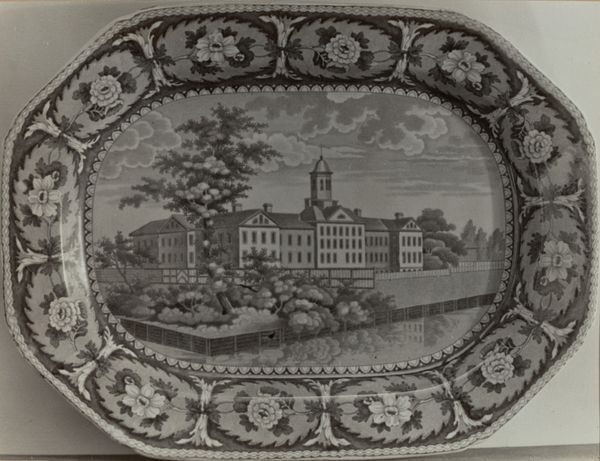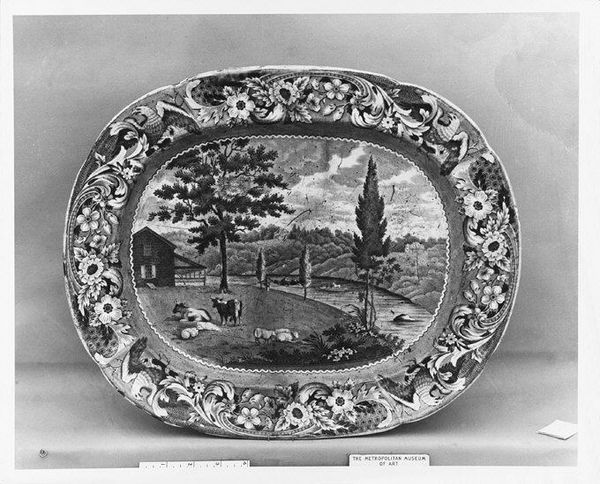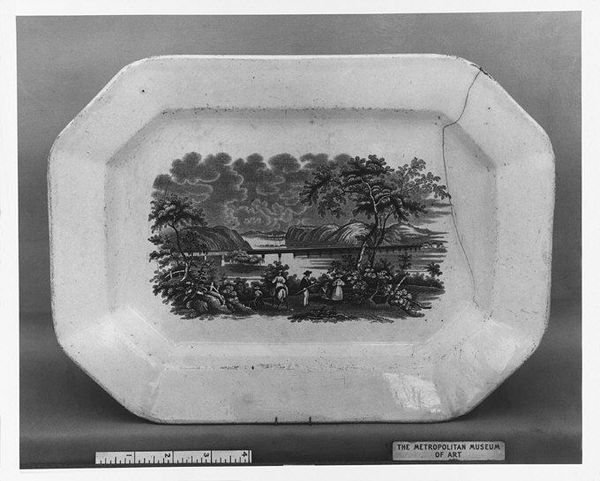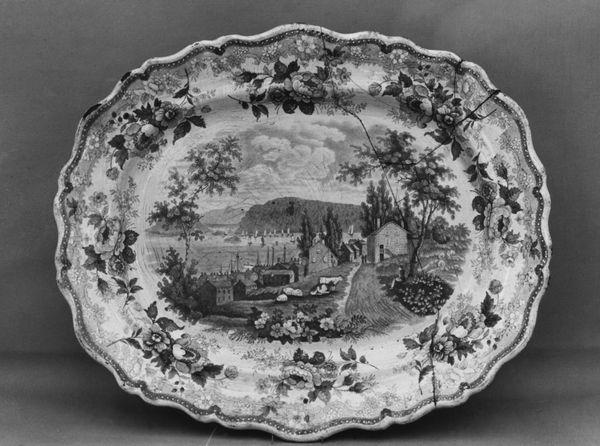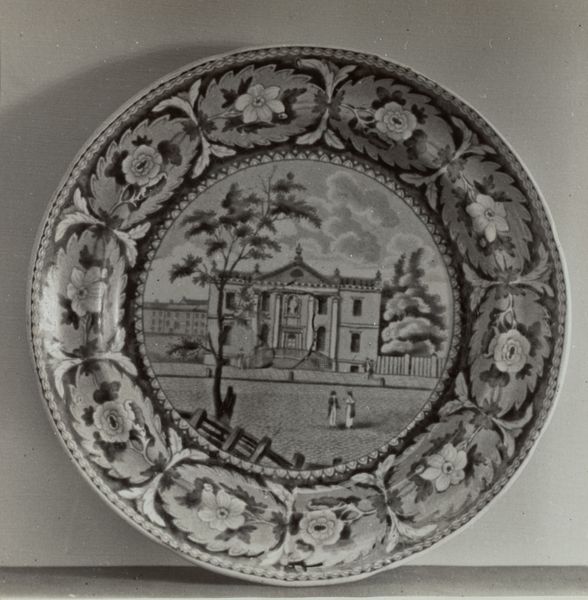
print, earthenware
# print
#
landscape
#
earthenware
#
stoneware
#
framed image
#
agriculture
#
building
Dimensions: 14 x 19 in. (35.6 x 48.3 cm)
Copyright: Public Domain
Curator: Here we have a Platter, made sometime between 1837 and 1857 by William Ridgway & Co. It’s currently held at the Metropolitan Museum of Art. Editor: It's quaint! The grayscale scene is simple but feels inviting. The symmetrical image placement gives it a sense of stability, perhaps echoing the structure depicted. Curator: This piece, rendered in earthenware with a printed design, really speaks to the burgeoning middle class and their aspirations. Imagine, a relatively accessible piece of decorative ware depicting an iconic landmark! The transfer print technology allowed for mass production and wider consumption. Editor: You’re right, the symmetry does point to larger, organizing principles in the visual scheme. Note the balanced weight of the domed building against the open park space. Even the linear marks suggesting clouds in the background reinforce this deliberate composition. Curator: Absolutely. This wasn’t just about aesthetic pleasure, but also about displaying status and perhaps even a connection to the broader political landscape. Think about how such objects circulated – impacting tastes and even spreading political ideas. Editor: That repetition of forms also appears within the building itself; columns, windows, the repeated spherical domes—suggesting power through uniformity. What statements might the landscape also present, visually contrasting natural life and civic constructions? Curator: Well, this brings up interesting questions of the labor involved. Consider the workers involved in mining the clay, shaping the earthenware, creating the print... It highlights the relationship between industrial production, consumer culture, and the everyday lives of 19th-century citizens. Editor: All that human input, channeled into one visually balanced presentation of ideal social life and values, it seems. Curator: Exactly. Thinking about how the "everyday" platter also carried and presented ideals through mass production highlights social connections so often hidden in museum settings. Editor: Fascinating. Looking beyond immediate aesthetics offers some potent cultural information embedded right here.
Comments
No comments
Be the first to comment and join the conversation on the ultimate creative platform.
